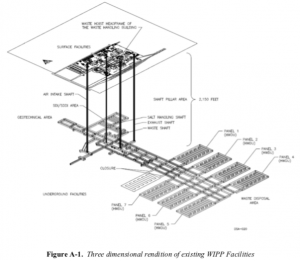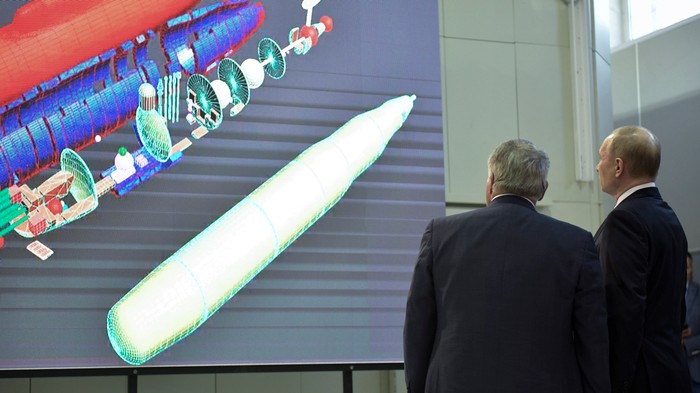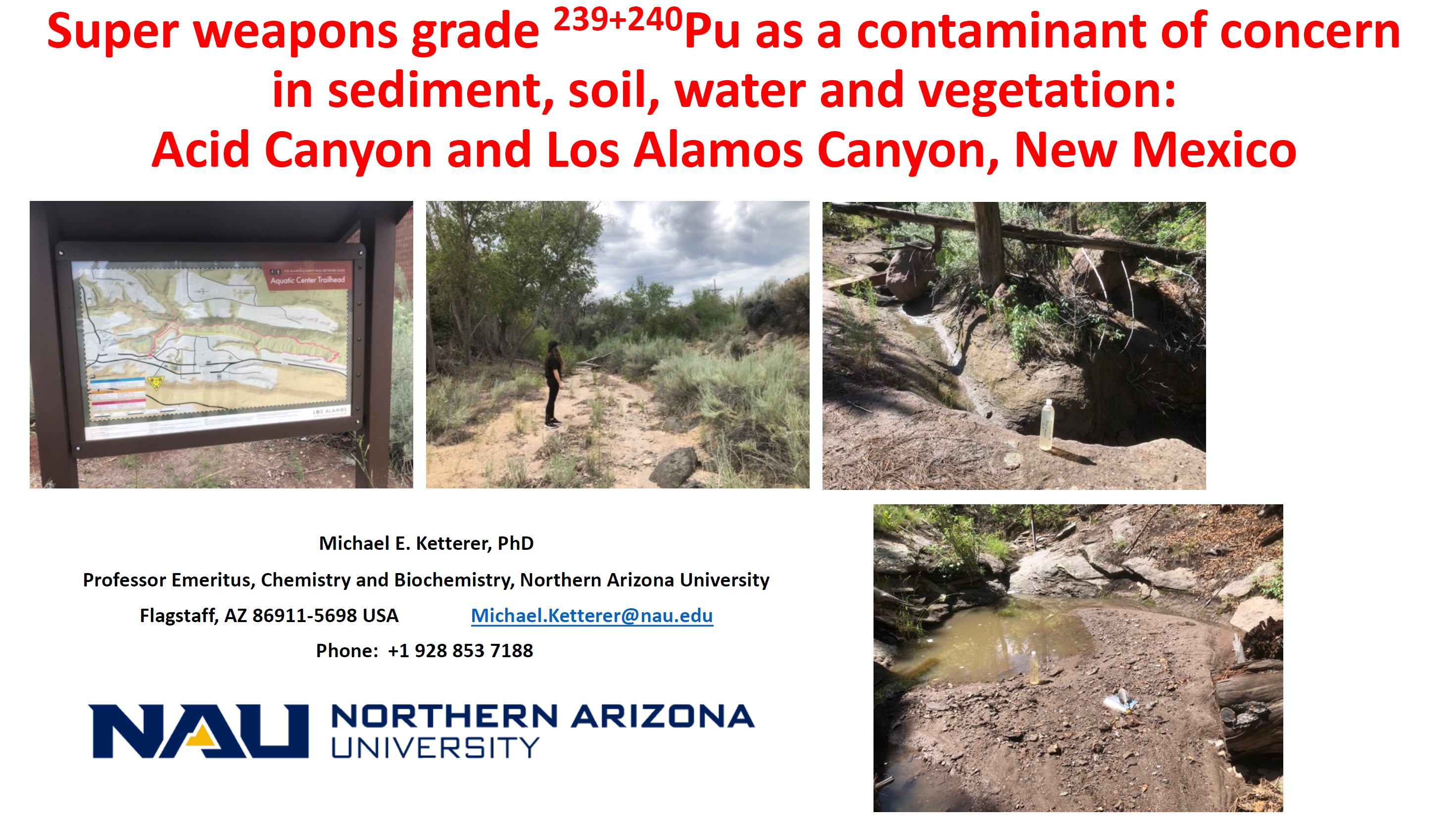QUOTE OF THE WEEK
Nothing Found
It seems we can’t find what you’re looking for. Perhaps searching can help.
LANL’s Central Mission: Los Alamos Lab officials have recently claimed that LANL has moved away from primarily nuclear weapons to “national security”, but what truly remains as the Labs central mission? Here’s the answer from one of its own documents:
LANL’s “Central Mission”- Presented at: RPI Nuclear Data 2011 Symposium for Criticality Safety and Reactor Applications (PDF) 4/27/11
Banner displaying “Nuclear Weapons Are Now Illegal” at the entrance in front of the Los Alamos National Lab to celebrate the Entry Into Force of the Nuclear Weapon Ban Treaty on January 22, 2021
Nothing Found
It seems we can’t find what you’re looking for. Perhaps searching can help.
Follow the Money!
Map of “Nuclear New Mexico”
In 1985, US President Ronald Reagan and Russian President Mikhail Gorbachev declared that “a nuclear war cannot be won and must never be fought.”

Waste Lands: America’s Forgotten Nuclear Legacy
The Wall St. Journal has compiled a searchable database of contaminated sites across the US. (view)
Related WSJ report: https://www.wsj.com
New & Updated
Nothing Found
It seems we can’t find what you’re looking for. Perhaps searching can help.
High Detections of Plutonium in Los Alamos’ Acid Canyon
Nothing Found
It seems we can’t find what you’re looking for. Perhaps searching can help.
September 3 Barbara Slavin, Director of the Future of Iran Initiative at the Atlantic Council, joins Joe Cirincione to discuss increasing tensions in the Middle East and the effects of Trump administration’s ‘maximum pressure’ campaign toward Iran.
Michelle Dover hosts Early Warning with Joe Cirincione and Tom Collina on the anniversary of the USSR’s first nuclear test. Michelle Dover and Joe Cirincione answer a question from Patrick about who in the US government is taking current nuclear weapons risks seriously.
Listen, Subscribe and Share on iTunes · Spotify · SoundCloud · YouTube · Google Play · Sticher
Also available on ploughshares.org/pressthebutton
Proposed New Exhaust at WIPP Designed to Release Radiation

19 seconds – the amount of time airborne radiological contamination could be released before the safety dampers close. This assumes that all other components work perfectly.
A recent report from the Defense Nuclear Facilities Safety Board (DNFSB) explains the DNFSB’s calculations on the proposed new (estimated at nearly $300 million) safety significant confinement ventilation system (SSCVS).
The New Nuclear Arms Race Is Here. And Russia’s Already Paying the Price.
Meet 4 new nuclear weapons systems the Kremlin is testing — right now.
BY GREG WALTERS | vice.com

At the funeral for 14 Russian sailors, Captain Sergei Pavlov hailed the “blameless heroes” for dousing the fire that broke out on their nuclear spy submarine, called the Losharik, during a secret mission last month.
“At the cost of their lives,” Pavlov said, “they prevented a catastrophe on a planetary scale.”
But as Russia tests and deploys an array of exotic new nuclear weapons, fears are mounting that the next nuclear mishap may not be so easily contained.
This summer alone, Russia has suffered some two-dozen casualties in accidents related to exotic nuclear hardware, including the mysterious explosion linked to the Skyfall missile program that killed seven and sent local radiation levels spiking in a nearby city.
The deadly incidents are stoking fears of a return to Cold War-style runaway nuclear arms development, accompanied by dangerous accidents and Soviet-style cover-ups.
“We need to acknowledge that the Russians are engaged in wacky programs,” said Aaron Stein, a nuclear nonproliferation expert at the Foreign Policy Research Institute. “It’s indicative of an arms complex that has been cut loose to pursue exotic, silly projects. And it’s dangerous.”
You can blame the renewed U.S.-Russian arms race, which nuclear experts warn is driving Russia to recklessly experiment with “absurd” new ideas.
On 29 August, the International Day against Nuclear Tests, Kazakhstan deposited its instrument of ratification for the Treaty on the Prohibition of Nuclear Weapons, becoming the 26th state party.
From 1949 to 1989, an estimated 456 Soviet nuclear tests — including 116 atmospheric tests — were carried out at the Semipalatinsk test site in Kazakhstan, with devastating long-term consequences for human health and the environment.
Upon the break-up of the Soviet Union, Kazakhstan inherited approximately 1,400 nuclear warheads, which it subsequently gave up — recognizing that its security was best achieved through disarmament.
The date of 29 August 2019 has special significance for Kazakhstan. It marks 70 years since the first Soviet nuclear test at the Semipalatinsk site and 28 years since the formal closure of that site.
We congratulate Kazakhstan on its ratification and we acknowledge the persistent efforts of Alimzhan Akhmetov, of the Center for International Security and Policy in Kazakhstan, to encourage the Kazakh government to take this important step.
Pakistan ups nuclear rhetoric, carries out launch of ballistic missile
BY AJAY BANERJEE | tribuneindia.com Tribune News Service New Delhi August 29, 2019
Pakistan has successfully test-fired surface-to-surface ballistic missile ‘Ghaznavi’, capable of delivering multiple warheads up to 290 km, the Army said on Thursday, amid fresh Indo-Pak tensions after India revoked Jammu and Kashmir’s special status.
Pakistan on Wednesday closed three aviation routes of the Karachi airspace till August 31, which had promoted speculation about the possible missile-testing.
Pakistan successfully carried out night training launch of surface to surface ballistic missile Ghaznavi, capable of delivering multiple types of warheads upto 290 KMs. CJCSC & Services Chiefs congrat team. President & PM conveyed appreciation to team & congrats to the nation. pic.twitter.com/hmoUKRPWev
— DG ISPR (@OfficialDGISPR) August 29, 2019
With this, Pakistan upped its ‘nuclear rhetoric’. The Director General of Inter Service Public Relations (DG-ISPR) said Pakistan on Wednesday night tested a short range nuclear missile in Sindh.
France Is Still Cleaning Up Marie Curie’s Nuclear Waste
Her lab outside Paris, dubbed Chernobyl on the Seine, is still radioactive nearly a century after her death.
BY TARA PATEL | bloomberg.com

In 1933 nuclear physicist Marie Curie had outgrown her lab in the Latin Quarter in central Paris. To give her the space needed for the messy task of extracting radioactive elements such as radium from truckloads of ore, the University of Paris built a research center in Arcueil, a village south of the city. Today it’s grown into a crowded working-class suburb. And the dilapidated lab, set in an overgrown garden near a 17th century aqueduct, is sometimes called Chernobyl on the Seine.
No major accidents occurred at the lab, which closed in 1978. But it’s brimming with radioactivity that will be a health threat for millennia, and France’s nuclear watchdog has barred access to anyone not wearing protective clothing. The lab is surrounded by a concrete wall topped by barbed wire and surveillance cameras. Monitors constantly assess radiation, and local officials regularly test the river.
“We’re proof that France has a serious nuclear waste problem,” says Arcueil Mayor Christian Métairie. “Our situation raises questions about whether the country is really equipped to handle it.”
Nuclear power accounts for almost three-fourths of France’s electricity, vs. a fifth in the U.S. There’s no lasting solution for the most dangerous refuse from the country’s 906 nuclear waste sites, including some of what’s in Arcueil.
Women’s Equality Day 2019: Diversity Encourages Innovation

nuclear diplomacy needs more women
“Negotiating successfully requires having the best people, regardless of gender, and recognizing that diversity enhances innovation.”
The story of women in nuclear security reflects many of the broader lessons we’ve learned about gender and politics: that women’s contributions have often been ignored or excluded, risking policies that lack key perspectives, nuance and debate. With today’s high stakes, we need national security policy that includes all of the best ideas. New and lasting solutions require diversity of representation and experience if we’re to solve the issues surrounding humanity’s survival.
https://www.washingtonpost.com/outlook/2019/05/23/why-nuclear-diplomacy-needs-more-women/
Nothing Found
It seems we can’t find what you’re looking for. Perhaps searching can help.
CRITICAL EVENTS
Nothing Found
It seems we can’t find what you’re looking for. Perhaps searching can help.
Nothing Found
It seems we can’t find what you’re looking for. Perhaps searching can help.
New Nuclear Media: Art, Films, Books & More
Nothing Found
It seems we can’t find what you’re looking for. Perhaps searching can help.















